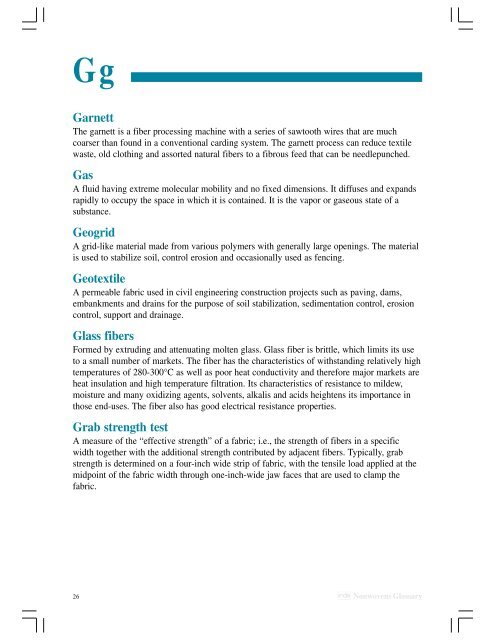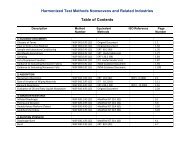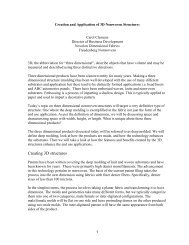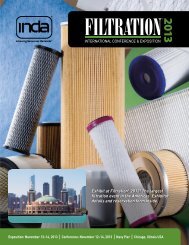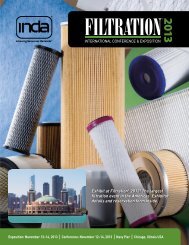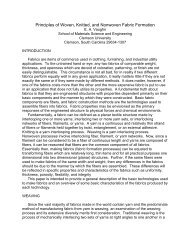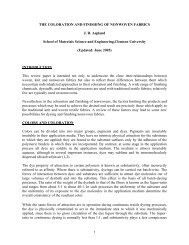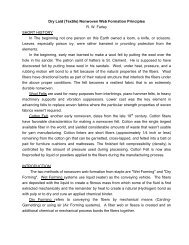You also want an ePaper? Increase the reach of your titles
YUMPU automatically turns print PDFs into web optimized ePapers that Google loves.
Gg<br />
Garnett<br />
The garnett is a fiber processing machine with a series of sawtooth wires that are much<br />
coarser than found in a conventional carding system. The garnett process can reduce textile<br />
waste, old clothing and assorted natural fibers to a fibrous feed that can be needlepunched.<br />
Gas<br />
A fluid having extreme molecular mobility and no fixed dimensions. It diffuses and expands<br />
rapidly to occupy the space in which it is contained. It is the vapor or gaseous state of a<br />
substance.<br />
Geogrid<br />
A grid-like material made from various polymers with generally large openings. The material<br />
is used to stabilize soil, control erosion and occasionally used as fencing.<br />
Geotextile<br />
A permeable fabric used in civil engineering construction projects such as paving, dams,<br />
embankments and drains for the purpose of soil stabilization, sedimentation control, erosion<br />
control, support and drainage.<br />
Glass fibers<br />
Formed by extruding and attenuating molten glass. Glass fiber is brittle, which limits its use<br />
to a small number of markets. The fiber has the characteristics of withstanding relatively high<br />
temperatures of 280-300°C as well as poor heat conductivity and therefore major markets are<br />
heat insulation and high temperature filtration. Its characteristics of resistance to mildew,<br />
moisture and many oxidizing agents, solvents, alkalis and acids heightens its importance in<br />
those end-uses. The fiber also has good electrical resistance properties.<br />
Grab strength test<br />
A measure of the “effective strength” of a fabric; i.e., the strength of fibers in a specific<br />
width together with the additional strength contributed by adjacent fibers. Typically, grab<br />
strength is determined on a four-inch wide strip of fabric, with the tensile load applied at the<br />
midpoint of the fabric width through one-inch-wide jaw faces that are used to clamp the<br />
fabric.<br />
26 <strong>Nonwovens</strong> <strong>Glossary</strong>


